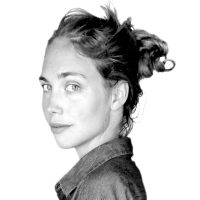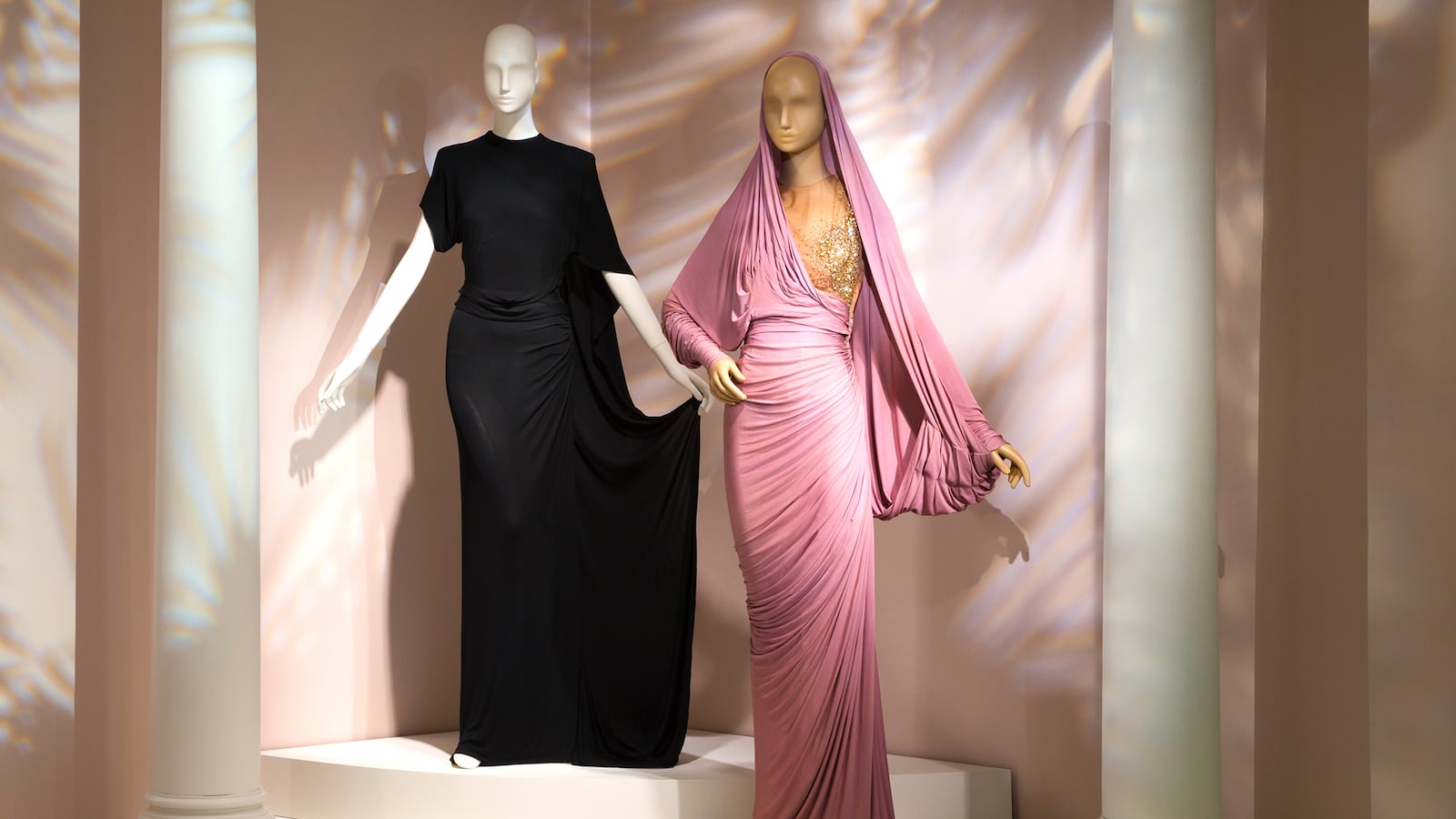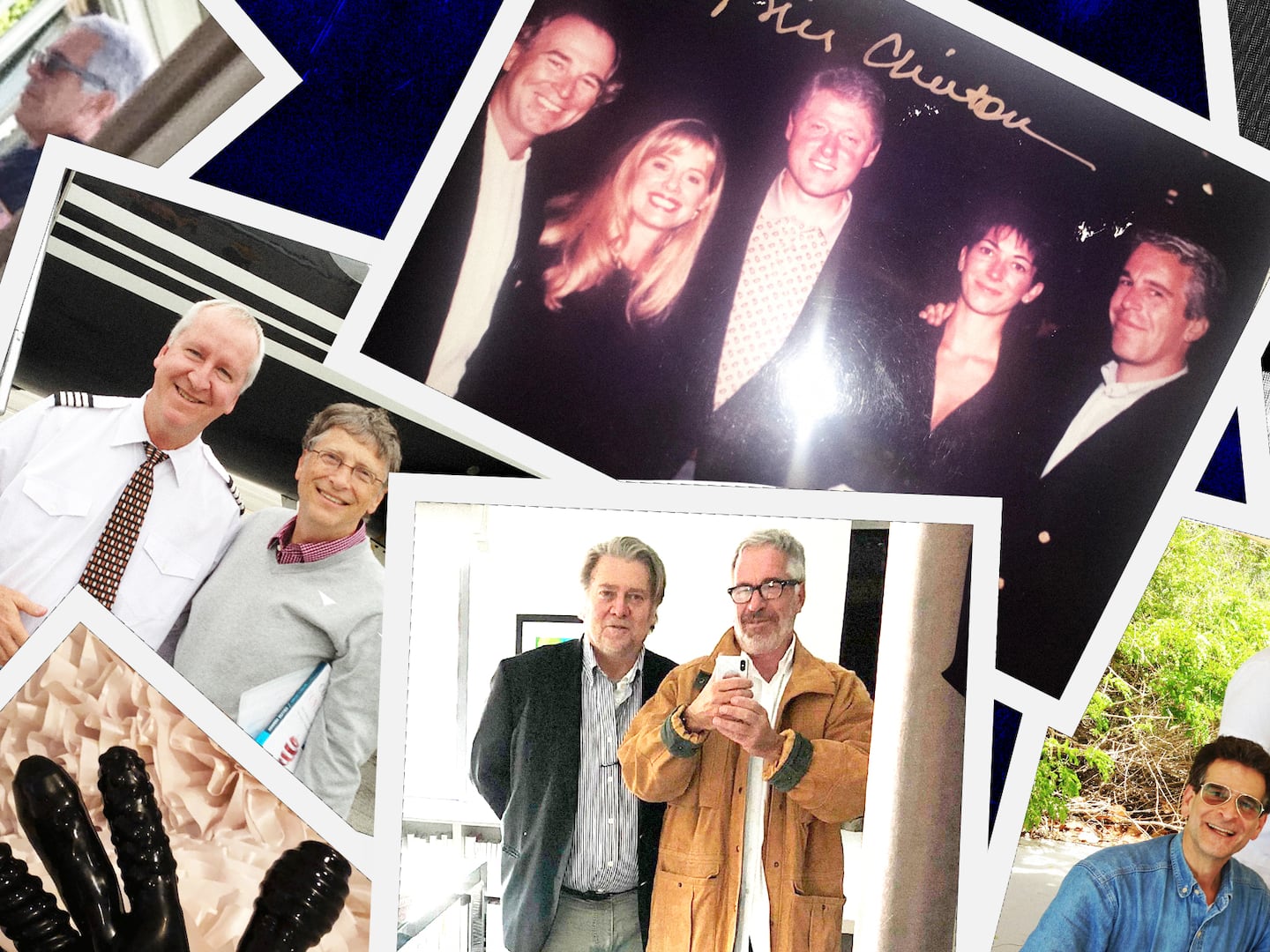Adrian, the Hollywood golden-era costume designer sought after both on and offscreen by the likes of Joan Crawford, Greta Garbo, and Jean Harlow, is having a moment.
Last month, Tory Burch presented a Fall 2017 collection inspired by The Philadelphia Story, the 1940 classic featuring Hepburn in Adrian’s designs.
Now, the famed MGM couturier behind Dorothy’s gingham dress and ruby slippers in The Wizard of Oz is the subject of a new exhibit, “Adrian: Hollywood and Beyond,” at the Museum at the Fashion Institute of Technology in New York.
Running through April 1, the exhibit showcases Adrian’s on-screen costumes and ready-to-wear designs (he opened a fashion house in 1942) alongside print advertisements and film clips, all highlighting his innovative use of materials and ahead-of-his-time design techniques.
Safari-inspired fashion is everywhere these days, but Adrian was one of the first designers to create bias-cut dresses from animal printed textiles—from silk tiger stripe to lamé snakeskin—for his 1949 collection.
He was also partial to neoclassical style, as seen in an ad featuring gowns with drapery details that almost look like columns. Neoclassical touches are also reflected in the exhibition space, which was built to be consistent with Adrian’s aesthetic. Other designs, like a bibbed gown in a hen print (Adrian called it “The Egg and I”) reflect his preoccupation with Americana.
Born in Connecticut as Adrian Greenberg, the designer moved from New York City to Los Angeles in 1925 to work in Hollywood. Designing during the Depression forced him to be inventive while working with fabric rationing: Adrian amplified simple silhouettes with dramatic, bold prints, treating them like canvases.
The effect was frequently playful—a simply cut dress in a colorful fish print, for instance—and occasionally surrealist. Fashion and art lovers alike will appreciate Adrian’s collaboration with Salvador Dalí, who designed a print for one of his gowns. Likewise a burgundy dress with a subtle, almost psychedelic teardrop print that Adrian called “Shades of Picasso.”
But the exhibit is especially geared towards an audience obsessed with the craft of fashion. Accompanying cards explain how Adrian used techniques like pleating, appliqué, draping, and other techniques to create clothes that celebrate textiles and materials as much as design. It is hardly surprising that the designer dedicated his final collection in 1952 to the “beauty” and “integrity of fabric.”
This visitor would have liked to see fewer advertisements and more images of Hepburn in The Philadelphia Story (the actress later said that Adrian “was my favorite designer. He and I had the same sense of smell about what clothes should do and what they should say.”) Or of Joan Crawford in her broad-shouldered, power suits in The Women.
One of the exhibit’s highlights is a clip from Adrian’s final film, Lovely to Look At (1952), featuring a fashion show of sorts: women emerge from backstage and saunter towards the camera and twirl around to show off their daywear, eveningwear, even bathing suits.
Adrian: Hollywood and Beyond is a tightly executed exhibit and wonderful tribute to the designer’s gift for craftsmanship. Some may leave wanting more. If they’re anything like this visitor, they’ll be inspired to spend the rest of the evening glued to the Turner Classic Movie channel and trawling eBay for Adrian’s designs.
Adrian: Hollywood and Beyond is at the Museum at FIT until April 1. Details here.






